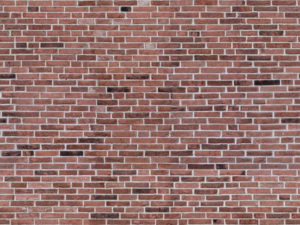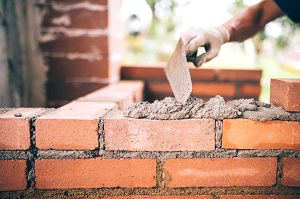Category: Masonry Services
How Often Should Brick Be Repointed?

Repointing refers to the process of removing the deteriorated mortar from the brick structure and replacing it with new mortar. When it is done properly, repointing can restore the beauty and functionality of a masonry structure.
If the repointing job is done the right way, it can last for quite a long time, namely somewhere between 50 and 100 years.
In case the repointing was done poorly, this does not only affect the overall appearance of the masonry part, but also can damage the well-being of the entire building. So the question would be whether you found the right people for the job, and how to fix things in due time, before the brick structure can get more deteriorated and therefore harder to repair.
Good repointing workmanship can add more value to your home or commercial building, while also preserving the life of mortar joints, wall and historic elements of a building.
Nowadays, the usual lifespan of a mortar layer is that of 20 to 30 years. There is a method to help you determine whether you need to repoint a masonry structure. Thus, with a help of knife, you can try to scrape out some mortar pieces. If this can be done easily, then repointing becomes mandatory. Or simply call the professionals New England Masonry and Restoration to do the inspection and repointing.
What Is Involved In DIY Masonry Restoration

DIY masonry restoration is possible, but it is always best to consult with an expert, to provide you with all the necessary guidance, tips and techniques of this type of work before engaging in any project.
First and foremost, there are certain essential tools that you may want to acquire in order to do this type of job. You will need things like: matching bricks, a chisel, hammer, mortar mix, sponge, masonry trowel, a tuck pointer, buckets and scrap containers –for water and mortar, and nitrile gloves.
Then you can start removing the old mortar with help of a chisel and a hammer. You should break it in small pieces, while also being cautious not to damage the old bricks in any way. After that, it is time to mix the mortar.
The next step is to put the bricks on top of each other without the mortar, to make sure the structure is spaced correctly. Then you remove them and can start the actual work by applying a small amount of mortar.
The idea is to make a correct estimation of the quantity of mortar which you apply between the brick layers. Too much mortar can stain the bricks, whereas too little will not hold the bricks together.
3 Questions You May Ask Your Masonry Restoration Contractor

One of the most important questions to ask your masonry restoration Connecticut contractor is whether he has a license. This is one of the most obvious things to do and by asking you can avoid any unpleasant situations in the future, related to legal issues or poor performance and unsatisfactory workmanship.
At the same time, he may need to provide evidence of liability insurance. Moreover, you need to make sure that the policies of this insurance cover all the works needed to complete your project. The type of insurance may differ depending on the type of building, namely if it is a residential or commercial property, and also on the general size and materials that were used.
Another very important thing you need to make clear is whether he can offer evidence of financial stability. This should be done in the written form. For instance, a letter from the financial institution involved with your restoration contractor would be of very good help. Supplier endorsements should make proof of your contractor’s good financial behavior, such as paying their bills in due time and playing it fair. Your masonry restoration contractor should be the type that is paying their workers and complying with local and national legislation.
How Can You Learn The Masonry Restoration Trade?

Learning the masonry restoration trade can be done through special programs designed to offer lectures, shop exercises, campus work projects, and so on. People who want to get familiar with this trade can choose between several types of materials, such as tile, brick and block.
Masonry restoration courses can offer thorough information regarding the masonry restoration process, starting with the basics: the tools, techniques, how to spread mortar, while also observing the required safety guidelines for this type of job.
Trained masons should also be able to read blueprints and specifications, as well as to make proper estimations of the costs of materials and labor and to determine the duration of the whole project. They should also find out about building permits and requirements, the necessary site tests, and so on. The bidding procedures are another ingredient necessary for masonry restoration Connecticut expertise.
Masonry restoration is something you learn gradually, and every day you can learn something new. Therefore, mastering this trade can take a long time, sometimes even a lifetime, due to the advancing techniques that skillful masons employ.
Experimenting with different materials and textures is something that a well-learned mason can apply, especially if he needs to give a fresh new look to an old building.
How Much Can You Expect to Pay Masonry Restoration?

The average payment for a masonry worker is that of about $80 per hour. This rate is usually related to other factors, such as profits, employment insurance, vacation, and so on. In case the rate offered by a mason is much lower or much higher, you should be cautious about hiring him. That means that he is either asking too much money, or that he lacks the necessary experience.
The situation is a bit different in case you need Connecticut masonry restoration. The means of charging fees for this type of work is different, namely the payment is calculated at about $25 per square foot.
In case your masonry structure needs repointing, the prices may also differ. Repointing becomes mandatory when the mortar between the layers of bricks becomes damaged, therefore putting the whole structure in danger. You should definitely not neglect this type of problem; otherwise you may have to face unwanted consequences. Repointing costs between $8 and $12 per square foot.
Façade repairing is among the most expensive masonry restoration services. In case you can re-use the old bricks, then the restoration may cost about $20-$30 per square foot, and if you need to replace the bricks, it may cost $25-$35 per square foot.

















